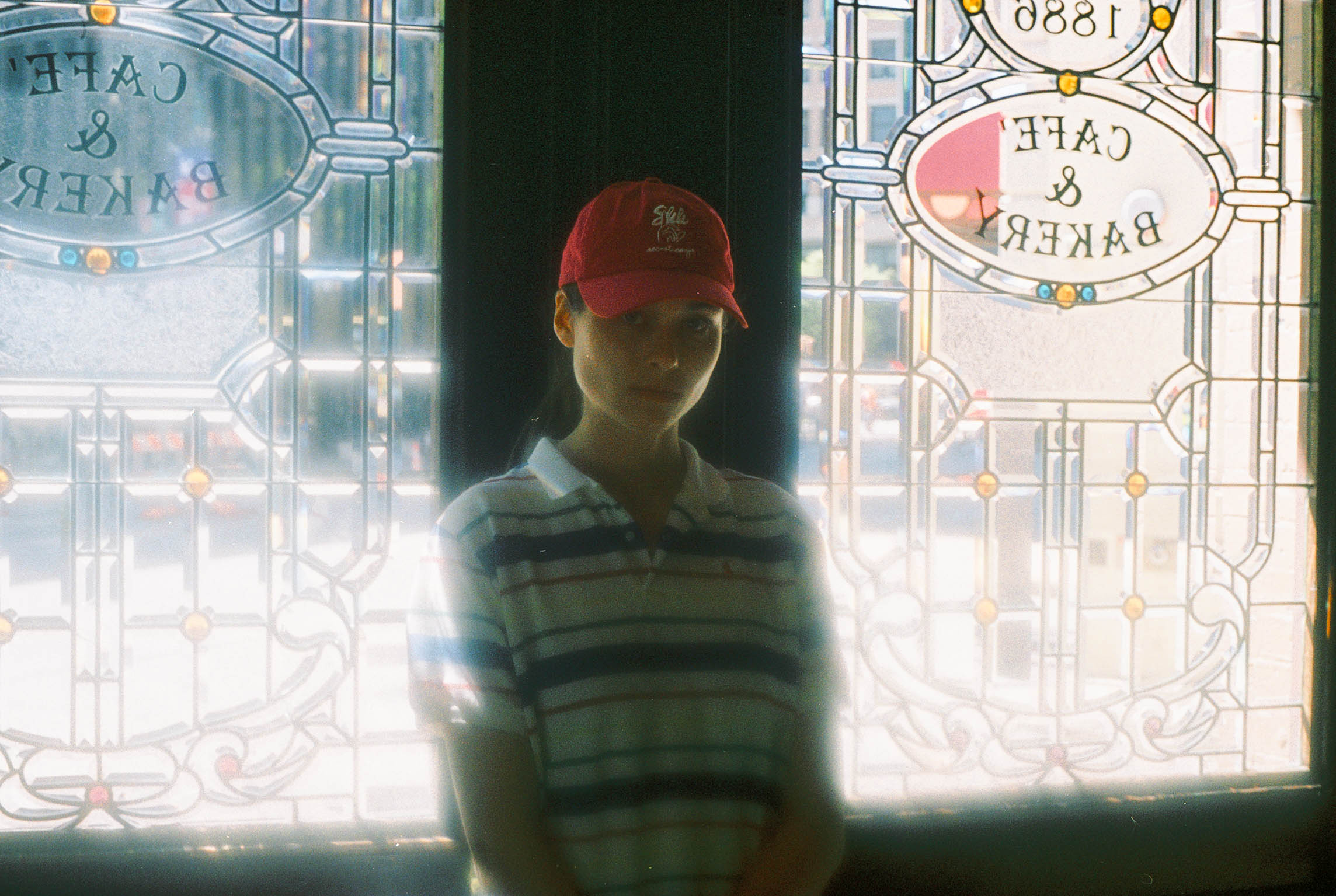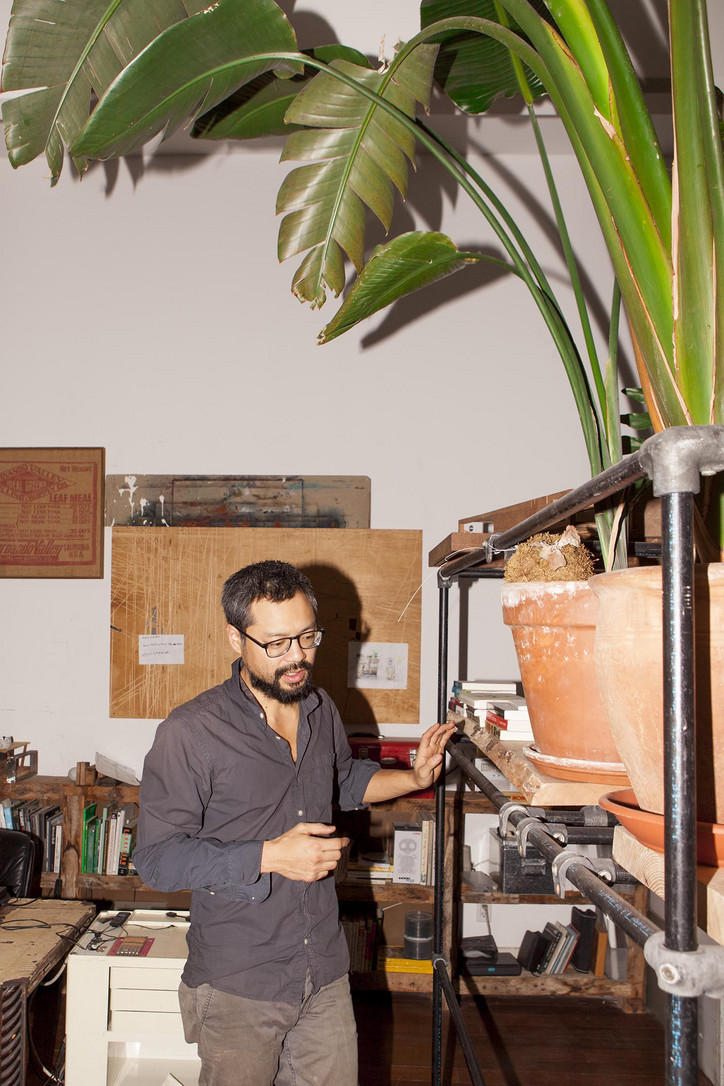With her full-length LP on its way, we know RYAN Playground is one to watch, so we sat down with the musician to talk skate culture, how modeling can feel like “a cage,” and beating up boys.
Stay informed on our latest news!
Stay informed on our latest news!

With her full-length LP on its way, we know RYAN Playground is one to watch, so we sat down with the musician to talk skate culture, how modeling can feel like “a cage,” and beating up boys.
Why the name RYAN Playground?
I started modeling very young. My real name is Genevieve, and my last name is Ryan. And there were too many Genevieves in the agency, so I decided to call myself Ryan for modeling. Then when I decided to release music, they started using the name Ryan again, but I wanted something more in the name. Because I’ve been doing music my whole life, I kind of consider it my playground. So it’s as simple as that.
When I think of a playground, I think of adjectives like “nostalgic” and “colorful” and even “childlike.” Your name is very fitting in that way.
Yeah. I’ve always done a lot of sports like basketball and skateboarding. I feel like that is part of the choice, too. I love to play. I love to play pool, I love to play baby-foot. I’m just a player.
I read that you’ve been skating for a while. In any way are you influenced by skate culture in your music or aesthetic?
I’ve always been influenced clothing-wise. Ever since I was five years old, that’s what I’ve liked to wear. Also just the designs of skate brands, as well as the music that can be associated with it. I listened to pop punk music my whole childhood, and I’m still listening to a lot of that now. It influences me, for sure.
Does this music influence your sound, or is it separate?
It’s more the aesthetic, but there’s definitely a bit of the sound influence. Pop punk vibes.


Favorite band?
That’s very easy: blink-182. They’ve been my number one forever.
I definitely wouldn’t have thought that.
I think it changes over time as I discover new music, but if it try to look at my favorite throughout my life, I always go back to blink-182.
Your songs are very minimal, if you will. I’ve also noticed this “minimal” trend become more popular in Top 40 radio, as opposed to an overdone, kitsch pop sound. Why do you think that is?
I never really thought about it as a trend. I’m just doing my music in a very instinctive way. Often when I do a song, I just do it in one day, and after it’s done it’s hard for me to go back. If it’s super minimal, I prefer to keep it authentic than rework it and add layers and layers. I think that’s why my sounds end up being pretty minimal.
You’ve said in an interview that you always had the drive to “prove that as a girl, I can do as much as a boy can do.” Where does this come from?
As a child, I used to hang out only with boys. I had a couple of girl friends, but mostly boys. I used to play sports a lot with boys, and I remember sometimes boys wouldn’t want me to come and play with them because I was a girl. And for real, I was better than them. I know I was better than them. I was kicking ass. So that really frustrated me. But I always wanted to be strong. When I was a kid, I used to beat boys up for no reason. Then at some point, I realized I shouldn’t do that. So I guess that’s why I have this feeling of proving myself to be as strong as a guy.


Does that translate to your career now in any way?
I think it still drives me. I look up to guy musicians a lot, and yeah, I just want to prove to people that I’m doing as good or better than boys. I just want people to accept that.
So how do you balance modeling and music?
I still model a little bit. I’m signed with Folio Montreal, but now we’re trying to merge both things together. I just shot for Roots, but as RYAN Playground, not as Ryan the model. Modeling is very interesting. I get to meet a lot of people and very interesting contacts, as in music. But modeling is more like a cage. You can’t totally be yourself -- at least this is how I felt. That there were some physical restrictions. When you do a shoot and you have to act like the “doll,” that wasn’t me, but I was doing it. I was acting. But in music, I’m showing off myself.
What’s the ultimate goal for RYAN Playground?
I definitely want to build my live show for when my album is going to be released. The album is done, so I’m super excited for that. I want this album to really go big. That’s my goal. I want it to get me to tour around the world.
That’s a good goal. It seems like people are responding well to it.
I’m pretty confident, but I’m dreaming big.
Check out more from RYAN Playground here.

We were lucky enough to have Bui participate in the office newsstand, now open at Canal Street Market. We met at the office office, where he was accompanied by his dog, Mio, to discuss his innovative work.
I read about your plant structures referred as different things, like architecture or plant cities. How would you describe it?
I call them "little micro-worlds." It's kind of taking the laws of science and looking at how ecosystems exist on every single scale. From galaxies to solar systems, to planets to far regions of the world, neighborhoods, and our own bodies. We have biomes in our stomach. And then you go even smaller. There's a whole scale of stuff that's all happening.
How do your structures work, exactly?
They work individually, just as simple sculptures, and they house plants. Or it could be sculptural artifacts. And then you can stack them on top of each other to make a bigger structure, if you so want to. But for these sets I think they work better as an individual unit.
Can you tell me a bit about the plant structures you designed for the office newsstand?
Yeah those are called Plant and Minis. They're miniature versions of the larger scale. This whole iteration is an exploration of different materials, of using wood and steel and concrete and copper, and then mixing in plants. So it's just using our every day industrial material and integrating plant life. It's a small representation of how we live in the city, or how we could be living in the city, if we were living with nature but with the stuff that we build around us.
You took part in the Lowline project, right?
Well I was more of an artistic collaborator. So I have a couple of art installations there right now. I helped them with their Kickstarter, and actually I did create a black version of a plant mini for their Kickstarter campaign, which they successfully funded last year. I helped them out with that.
Do you think New Yorkers, or people that live in cities, in general, should interact more with plant life?
It kind of goes without saying. I think we always thought of a city as built environment, but now we have to integrate nature as a part of life. It should be almost invisible. Even our next generations are not gonna think about plants, they're just gonna be like, "Oh, it's here. We've always lived with it." I think consumption patterns are changing. Instead of people buying CDs or t-shirts or another whatever, people are really spending money on plant life, and that's taken more of the surface area of our homes.


What do you think having plant life around does for a person?
First of all, it's living. And just to understand that it has its own science. That you really can't control it too much. You have an idea of what it's going to do, but it's still down to a flower, or a bud, or it's gonna go dry if you don't water it. So I think that whole responsibility—it’s a very light responsibility, but it's essential. And of course some plants can help clean the air, and then also a visual connection to green, as a color, there's a lot to say about that too.
How do you feel about succulents? They’re all over NYC apartments.
Succulents are great. They need a lot of light. They're easy to care for. They're a great plant for New Yorkers.
Do you have any plant recommendations, for New Yorkers or anyone who lives in a big city?
If you have a south-facing view get cacti, they're great and very resilient. They don't need much water, and in the winter you can water them like every two weeks or every three weeks, so I think the minimal care for New Yorkers - for someone who wants a more robust plant, the Monstera. They will let you know when they're thirsty because the leaves just kind of flap down.
Does Mio ever eat any of your plants?
Not yet! I tried to feed him a cucumber, but he won't eat that. He just likes meat [laughs].


Tell me about the project you took to Art Basel Miami.
I'm taking another modular series called, "Geological Frame." And it's with Patrick Parrish. And it's a whole series of looking at wood and other earth-like materials as these micro landscapes. They're framed in this beautiful brass and bronze, and it explores our relationship between man and nature, and how man is always about leveling and keeping things straight, and how nature gives this organic kind of shape. As you can see, like with a piece of wood—we manipulate that piece of wood to have a straight edge for us to sit on, to write on, to sleep on, so you will see in a lot of the works. Inside this prism there's this very organic expression. It gets to be whatever it is. And on the periphery of the space it's clean, flat wood.
What's the biggest structure that you've ever built? I saw on your website there's quite a large one.
Yeah so that was at the Mark Miller Gallery, back in 2012. We built 65 units. Sixty-five modular ecologies. Each unit had its own world and we stacked it to make this gigantic plant. That filled about a 1,000 sq ft space.
So there's really no limit to what you do.
There's no limit. Absolutely not. It's just about understanding the power of one unit and the power of many units together.

